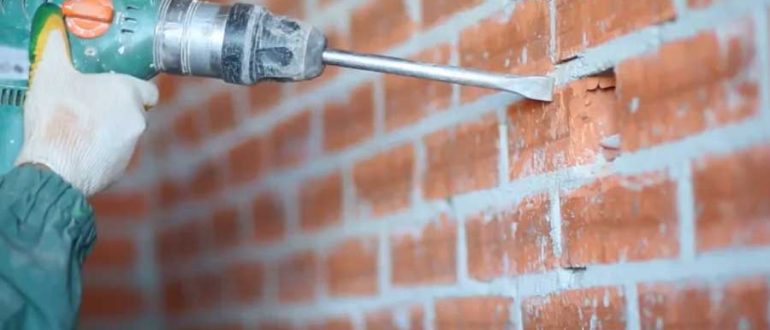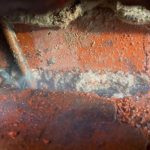Water leaks within brick walls can be tricky to detect but, left unchecked, can lead to severe structural damage.
Water can seep into cracks and mortar joints, causing erosion, mould growth, and even structural weakening. This makes early detection of water leaks crucial in preventing extensive damage. We will help you understand how to identify, locate, and fix water leaks in brick walls before they cause significant damage to a property.
- Common Signs of a Water Leak in a Brick Wall
- Tools and Equipment Needed
- How to Detect a Water Leak in a Brick Wall
- Fixing the Leak
- Preventing Future Leaks
- Conclusion
Common Signs of a Water Leak in a Brick Wall
Identifying a water leak in a brick wall early on can save you a lot of trouble down the road. Here are some telltale signs that you might have a leak:
Visible Damp Spots
Damp patches on the wall, especially if they persist or grow over time, are a strong indicator of a water leak.
Mold or Mildew
Unexplained mould or mildew on your walls, particularly in areas that aren’t exposed to direct moisture, often points to a hidden leak.
Crumbling Brickwork
If you notice bricks that are starting to crumble or mortar joints that are deteriorating, this could be due to prolonged exposure to water.
Musty Odors
A persistent musty smell can be another sign of water damage within your walls. This is often caused by hidden mould growing inside the structure.
Tools and Equipment Needed
To effectively detect and fix a water leak in a brick wall, you’ll need a few essential tools. A flashlight, ladder, and screwdriver will help you access hard-to-reach areas, while moisture meters are crucial for identifying hidden dampness inside the walls. Thermal imaging cameras are useful for spotting temperature differences that indicate cold, damp areas, and acoustic leak detectors can pick up the sound of water dripping or flowing, helping you pinpoint the exact location of the leak.
How to Detect a Water Leak in a Brick Wall
Please have a look on water leak in brick wall picture gallery
Detecting a water leak in a brick wall requires a methodical approach, starting with a thorough visual inspection of both interior and exterior walls for signs of dampness, cracks, or discoloration, especially around windows, doors, and other potential entry points. Moisture meters are essential for identifying hidden leaks by measuring moisture levels inside the wall, while thermal imaging cameras help detect cold spots indicating water accumulation. Acoustic leak detectors further assist by amplifying the sound of dripping or running water, making it easier to pinpoint smaller, less obvious leaks.
Fixing the Leak
Once you’ve identified the source of the leak, it’s time to fix it. The approach you take will depend on the severity and location of the leak.
Repairing Small Cracks
For minor leaks caused by small cracks, you can use a sealant to fill the gaps. First, clean the area thoroughly, then apply the sealant using a caulking gun. Smooth it out with a putty knife and allow it to dry.
Dealing with Larger Damage
If the damage is more extensive, such as large cracks or crumbling mortar, you’ll need to take a more robust approach. This might involve removing and replacing damaged bricks or repointing the mortar joints.
When to Call a Professional
Some leaks are simply too complex or dangerous to handle on your own. If you’re dealing with a major leak, extensive damage, or if the source of the leak is difficult to identify, it’s best to call in a professional water leak detection services.
Preventing Future Leaks
Prevention is always better than cure when it comes to protecting your brick walls from water leaks. To minimize the risk, start by conducting regular inspections of your property, focusing on the condition of the brick walls. Look for early signs of wear and tear, such as cracks or loose mortar, and address these issues promptly before they escalate into more severe problems. Maintaining the mortar joints is crucial, as they are particularly susceptible to water damage; repointing them periodically will help keep your walls watertight. Additionally, protecting the exterior surfaces of your brick walls by applying a water-repellent sealant can prevent water penetration, especially in areas exposed to heavy rainfall. Ensuring proper drainage around your home is also essential; poor drainage can cause water to pool near your walls, increasing the likelihood of leaks. By following these steps, you can significantly reduce the risk of water leaks in your brick walls, safeguarding your home from potential damage.
Water leaks in brick walls can be a homeowner’s nightmare, but with the right tools and knowledge, they are manageable. By regularly inspecting your walls, using advanced detection methods, and addressing issues promptly, you can protect your home from water damage. If you’re ever in doubt, don’t hesitate to call in a professional to ensure the problem is resolved correctly.






